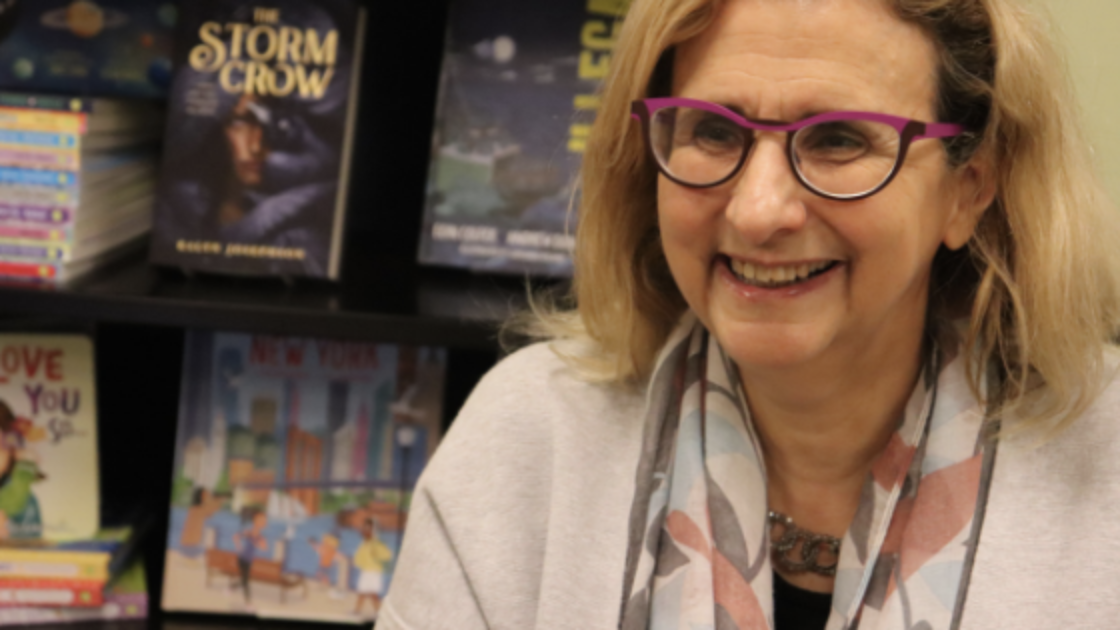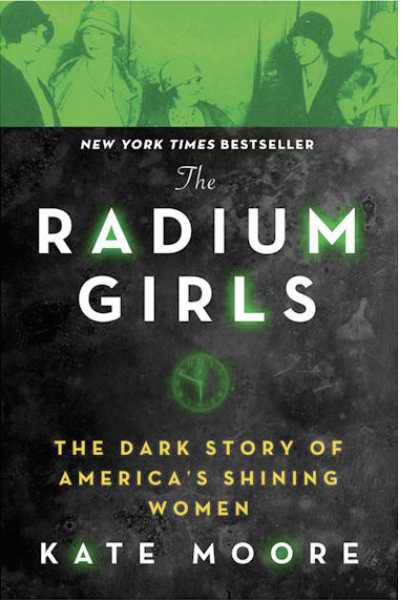An Interview with Publisher Dominique Raccah
How often do you look to see who published the book you’re reading? If you answered “rarely, if ever,” you’re not alone. Few readers concern themselves with publisher IDs, more focused on the stories and the authors who write them. But book publishers are not all the same, not by a long shot. Bas Bleu works with hundreds of publishers—of all different sizes and both broad and narrow scope. One of our long-running partnerships is with Sourcebooks, which we’ve watched grow into the largest woman-owned publisher in North America. This week, Sourcebooks publisher and founder Dominique Raccah took a break from her busy schedule to talk to us about starting her own company, the importance of publishing women’s stories, and the timeless tales of Georgette Heyer.
Bas Bleu: You launched Sourcebooks in 1987, leaving a job at a major advertising agency to do so. Why make the leap into publishing? What were the early Sourcebooks years like? What were your initial goals, and have they evolved over time?
Dominique Raccah: I left a promising career with advertising giant Leo Burnett, cashed in $17,000 from my 401(k) plan, and launched a publishing house from an upstairs bedroom in my home in Naperville, Illinois.
Why? Because books change lives. I know that because books changed my life at a young age when I first came to America. I was nine years old and did not speak English. I found refuge in the library, where books helped me to understand the culture and the language of the world I now found myself in. I have seen over the last thirty-one years how books can make a profound difference in peoples’ lives, and that is what continues to drive the Sourcebooks mission.
I started with just one book, and was initially focused on publishing professional finance titles, books for bankers, and how-to books for small-business owners.
It’s pretty wild that the company I started just thirty-one years ago has become a Top 11 U.S. publisher and the largest woman-owned publisher in North America. We have over 100 employees and now publish hundreds of books each year in a variety of categories.
BB: The traditional hub of American publishing is New York, but Sourcebooks calls Naperville, Illinois, home. Has that physical distance affected your company’s development and growth over the years?
DR: It has affected our success…in a positive way. We are proud of our roots in the Midwest. We are still based in Naperville (though we also now have offices in New York, Connecticut, and Arizona) and we are committed to celebrating and growing Chicago as a literary hub.
When we say we publish books for “our neighbors,” we’re actually referring to readers across the U.S. We have shipped more than five million regional children’s books in the seven years that Sourcebooks has been running that program. We are America’s hometown publisher because we provide books about America’s hometowns.
BB: Publishing is a notoriously tough business. During your career, what major changes have you observed in the book business? What constants give the industry its strength?
DR: The constants are easy—the power of storytelling and the written word endures. We say often that books change lives. And they do, in ways both large and small.
Publishing is indeed a tough business. One thing that’s often overlooked is that it requires a business acumen, not just a literary acumen. It takes a lot more than just loving the book to make it successful. At Sourcebooks, we’ve been helped immensely by the big changes in the volume of data available about what readers want. Today we can gather sales information on basically every book published, we can see how readers are responding to our books in real time, and we can access most points in the supply chain to ensure books get in the hands of the right readers in the right places. Publishing is a business often based on gut instinct, but I’ll take data over my gut every day.
BB: Our readers (and our editors!) are very keen on Georgette Heyer. How did her novels come to live at Sourcebooks? Why do you think Heyer’s work—much of which is set in England during the Regency period (1811–1820) and was written more than a half-century ago—is so popular with modern American readers?
DR: Georgette Heyer is nothing less than timeless. Her words and her language are concise, which keeps her books incredibly accessible for today’s readers. And her characters and themes go straight to the heart of what it means to be human, and that never changes.
We were fortunate years ago to be able to meet with the Heyer estate and to offer them a vision for publishing and promoting her books for a new generation. They are incredibly forward-thinking and supported new decisions we were suggesting about how the books would get in the hands of a readership both old and new.
BB: Radium Girls, The Only Woman in the Room, Sky Girls, Girl in Disguise, Carnegie’s Maid… Bas Bleu’s readers love these novels and biographies of courageous, pioneering women. Yet many of our customers write to ask us, “How is this the first I’m hearing about these women?” Did Sourcebooks set out to share the stories of remarkable (often overlooked) women or was it happy coincidence they all found a home on your shelves?
DR: It’s in our DNA to tell stories about women who have been forgotten. Sourcebooks does this across all of our imprints, from kids, to adult fiction and nonfiction. The more we can tell these stories, the more we can help change inequality. Books changing lives is our company’s mission statement, and every book we acquire has the power to do that.
I love how far we’ve come in terms of creating gender equality but there’s clearly more to do. Honestly, that’s one of the many reasons why I’m so proud of the company Sourcebooks has become. 70% of our employees are women. 77% of our leadership team are women. And Sourcebooks today has a mission around women and their stories.
BB: Just as a parent can’t choose a favorite child, we’re sure it’s difficult for you to choose your favorite Sourcebooks titles. So we’ll let you choose three! Which of your company’s books are you particularly proud of?
DR: There are three books that come to mind as watershed moments for Sourcebooks.
In 1998, we broke all boundaries with We Interrupt This Broadcast by Joe Garner, a mixed-media book featuring two compact discs with integrated content. It was our largest first printing, and it went on to become Sourcebooks’s first New York Times bestseller. The brilliant pairing of live audio with photographs and the written word generated enormous interest within the bookselling community.
Three years later, we reinvigorated the way readers experience poetry with Poetry Speaks, a book and three-CD combination featuring noted poets like Tennyson and Plath reading their own work. This anthology, a Los Angeles Times and New York Times bestseller, was lauded by Publishers Weekly as having “the potential to draw more readers to poetry than any collection in years.”
After saying I would never publish a children’s book, we released our first children’s picture book, Poetry Speaks to Children, in 2005. The unique grouping of poems, illustrations, and a CD of poets reading their work delighted booksellers and found its way into the hearts of parents, teachers, and children alike, landing it on the New York Times bestseller list for ten weeks. The title eventually marked the springboard for the launch of Sourcebooks Jabberwocky, which started in 2007. A decade later, we’re the eleventh largest children’s book publisher.
[Editor’s note: We Interrupt This Broadcast, Poetry Speaks, and Poetry Speaks to Children were all featured in past editions of the Bas Bleu catalog.]
BB: What can our readers look forward to seeing from Sourcebooks in the future?
DR: We are obsessed with bringing readers stories they’ve never heard before. They can come in all stripes, from adult fiction and nonfiction, through YA novels, and across all ages of children’s books. We’re expanding in each of those areas. As the largest woman-owned publisher in North America, we are especially interested in telling fresh stories of remarkable women.
We’re also working hard to help readers of all sorts see a bit of themselves in books. Representation is vital to the impact of books and, frankly, to the health of the culture.
Very specifically, we’re looking forward to the next books from bestselling authors Kate Moore (The Radium Girls), Kristina McMorris (Sold on a Monday), Marieke Nijkamp (This Is Where It Ends), and many, many more. We have the #1 science author for children in Chris Ferrie and we’re expanding his reach across age ranges and styles. But there are so many I’m not naming that I’m sure I’ll feel bad later! And so many new voices to debut as well!
BB: Thank you, Dominique Raccah, for sharing your insight into the publishing world. We look forward to the wonderful books and stories to come from Sourcebooks!




